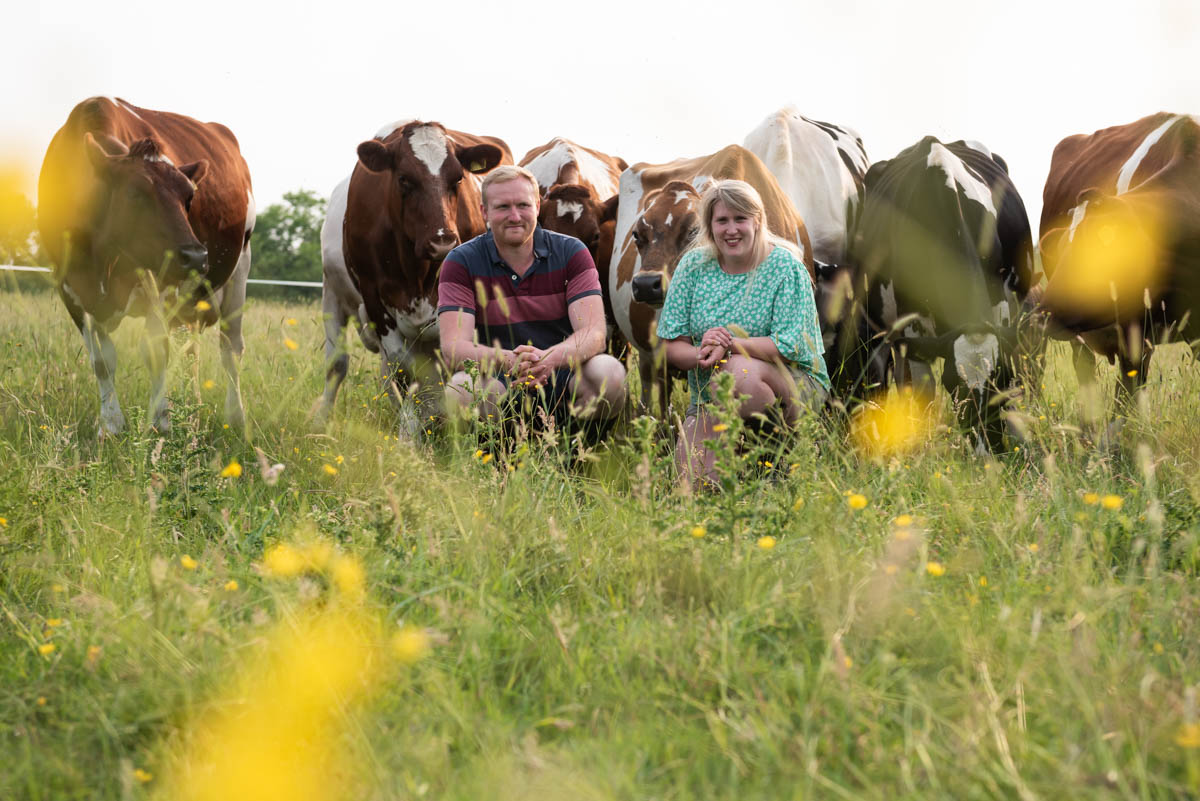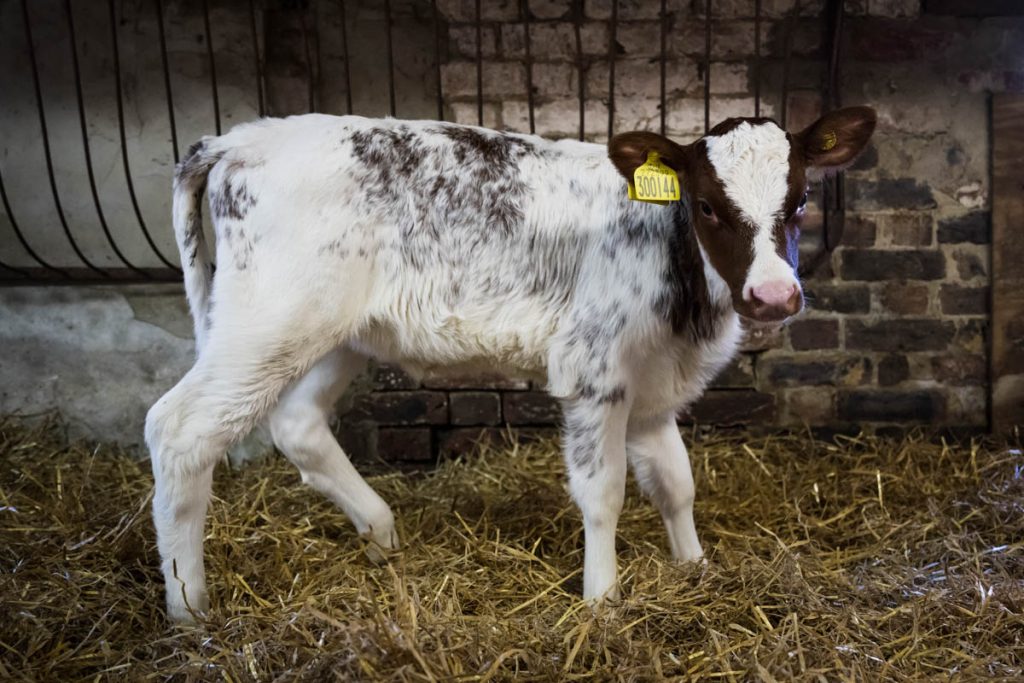Regenerative Farming

Here at Nutfield Dairy we farm regeneratively.
This means we focus on the health of our most important asset, the soil, and how we can manage the farm and cows in a way that improves it. The quality of our soil determines the nutritional value of our food, how well the land can withstand drought and heavy rainfall and whether or not we have a healthy ecosystem.
Soil is key to combatting climate change as it has the capacity to capture and store carbon from the atmosphere efficiently and significantly.


How are we improving the Soil?
We manage Brays Farm holistically; this means we have a whole system approach. It is so important that food production remains part of a healthy ecosystem which works with nature in a way that understands the relationships between animals, plants and people in the environment in which we all live. This is called agroecology. One example of how we have put this into practice is by sowing a diverse range of plants across our pastures and attempting to establish a wildflower meadow.
This is incredibly important because biodiversity is the key to supporting life in general, including us. We need a wide range of different plants, animals and microorganisms to allow a healthy ecosystem to thrive. By encouraging a wide variety of deep rooted grasses, herbs and legumes in our fields we will create a rich aerated soil which will act like a sponge absorbing water, CO2 and supporting a wide range of wildlife.
The Importance of Soil Health and Diverse Pastures in Cattle Farming.
There is far more life under our feet than there is above, in just one teaspoon of healthy soil there are more microorganisms than there are people on earth. Having a diverse range of plants including wildflowers also benefits our cows as well as wildlife. For example, some plants such as Sainfoin and Birdsfoot Trefoil contain tannins in their leaves and stems which can reduce worm burden in cows meaning there is no need for us to use chemical wormers.
We have seen this greatly improve our dung beetle population and therefore life further up the food chain. Also by providing the cows with this species rich diet they have all the essential minerals and vitamins they require without feeding them concentrated feeds. Our cows are now 100% pasture fed. This brings great benefits as milk and meat from cattle that haven’t been fed on grain but solely on pasture contains less saturated fat, higher levels of omega 3, higher levels of vitamins and minerals particularly calcium, magnesium and potassium and vitamin A and E.


Sustainable Cattle Farming: Reducing Carbon Footprint and Preserving Arable Land.
By not feeding grain we are also considerably reducing our carbon footprint as this feed may have been shipped long distances and may not have been grown in a sustainable manner. It also means that arable land hasn’t been used to feed our cattle which could have otherwise been used to feed people.
To ensure the success of this system we have carefully chosen a breed of cattle that can cope with these low inputs. Modern breeds of cattle such as the widely used Holstien have been bred to produce huge volumes of milk but require huge feed inputs such as maize and grain which also requires a vast amount of land. We have a breed called Dairy Shorthorns. They are an old, traditional, hardy breed that thrives on a grass diet. We only milk them once per day allowing them to rear their calves rather than removing them soon after birth.
Our system can not compete with the large milk yields of a more conventional dairy and our stocking rate is roughly half of what many commercial farms are. But, the benefit our simple methods provides to soil, wildlife and the environment in general is huge.
Harnessing Nature's Power: The Promise of Regenerative Farming
Farming regeneratively means we don’t use any synthetic fertilizer or chemical sprays as this inhibits soil from doing what it is naturally capable of, and these chemicals can remain present in our food as well as being devastating for wildlife. Our slogan is “Cows saving the Planet”.
This may sound contradictory to what we have been told about methane and the emissions from the agricultural industry in general but if we manage them correctly cows are one of the best tools we have to improve soil and therefore reduce CO2 levels. We manage the grazing of our cows using what is known as a multi paddock system. We do this by splitting up our fields using electric fencing so the cows are concentrated on smaller areas and are then moved to a fresh paddock every day. Grazing in this way mimics a herd of wild herbivores that are kept close and regularly moved on by predators. The importance of this is that it avoids over grazing. Plants are intensively grazed but then have a long rest period before the cows return (at least 30 days).
This allows plants to fully recover and stimulates root growth which improves soil structure. Plants that have been grazed will photosynthesize more and therefore pump much more carbon into the soil compared with land which hasn’t been grazed. That carbon then feeds soil microbes which again improves soil health and function. This long rest period also increases the presents of insects, birds and other wildlife which therefore regenerates the ecosystem.


How Regenerative Grazing Nurtures Soil and Wildlife
By grazing the cows like this their feet trample the ground in a way that breaks apart earth allowing dormant seeds to germinate. Their dung and urine fertilizes the soil and increases the organic matter. This results in much better natural biodiversity which we have already seen happening here at Brays. Also, by using this system we do not need to use pour on insecticide to deter flies as the cows are moved onto fresh, clean pasture each day away from the dung. Again, we have seen this greatly improve our insect population as well as our swallow population, natures fly control. This is why we don’t use spays, “icide” means to kill and when you apply an insecticide, pesticide or fungicide you are never going to only effect your target species resulting in a negative impact to pollinators for example.
Embracing the Vital Role of Cattle and Regenerative Farming
What I hope people will take away from reading about how we farm is how important cattle and ruminant livestock are and why they need to remain in our landscape. We hear a great deal of negative propaganda particularly focused on cattle which consistently and greatly overestimates their impact and under estimates their value.
There is a failure to understand different farming systems resulting in everyone being tarnished with the same brush and a lack of understanding of the difference between carbon and methane. Unlike carbon, methane has a fairly short lifespan and if properly managed will be sequestered into the soil as part of a natural cycle. Today there are some very loud voices calling on us to use milk and meat alternatives and for animal agriculture to be consigned to the history books. This would result in a catastrophic disaster for our environment and human health.
What we need is a change in attitude. We all know the carbon produced by cars and planes etc is damaging but no one is seriously calling for cars to be banned. Instead we are changing how they are powered. The same attitude needs to be adopted in agriculture, rather than abolishing it we need to change it and stop harmful practises in favour of regenerative methods. The food we eat is only as good as the soil in which it is from. To farm organically we need cow dung to create a fertile soil without the need for synthetic fertilizer. For wildlife conservation we need a healthy soil to restore a functioning ecosystem. To combat climate change we need to not just focus on reducing our production of CO2 but how get rid of it.
The best way to do that is to use cattle on a biodiverse grazed landscape to efficiently sequester carbon into a health functioning soil. We need to literally start from the bottom up and value the substance that many people refer to as dirt.


The products we produce are lower in saturated fat and have higher levels of omega-three than cows that have also been fed on grain. As well as making better, tastier products this makes for happier healthier cows that can graze outside for as much of the year as possible making rich creamy milk.




